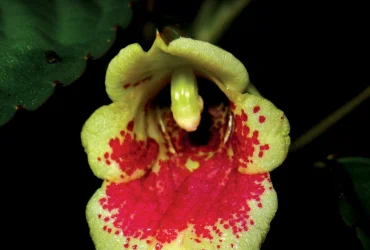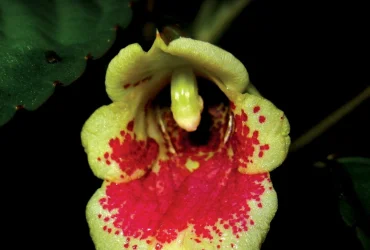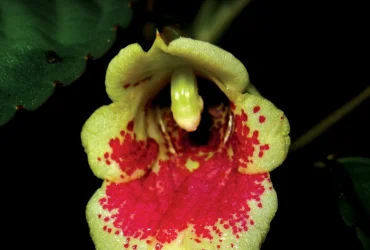Volume 4 | Number 2 | November 2012
 v4i2.72
v4i2.72ISSN: 1800-427X (print)
eISSN: 1800-427X (online)
DOI:10.47605/tapro.v4i2.72
Submitted date: 26 March 2012
Accepted date: 26 July 2012
Published date: 14 November 2012
Pp. 69–76.
BOLBOCERATINE SCARABS OF GENERA Bolbohamatum KRIKKEN, 1980 AND Bolbogonium BOUCOMONT, 1911 (COLEOPTERA: GEOTRUPIDAE) FROM CENTRAL INDIA
Kailash Chandra* & Devanshu Gupta
*E-mail: kailash611@rediffmail.com
Abstract
This study includes a taxonomic account of four species of genus Bolbohamatum; B. calanus (Westwood, 1848), B. phallosum Krikken, 1980, B. marginale Krikken, 1980 and B. laterale (Westwood, 1848) and one species of genus Bolbogonium; B. insidiosum Krikken, 1977 from Central India (Madhya Pradesh and Chhattisgarh). The pronotal ornamentation and external male genitalia of Bolbohamatum species has been diagnosed with the incorporation of an identification key to the species from Central India. A checklist containing 19 Indian species of both genera (Bolbohamatum and Bolbogonium) has also been prepared with their distribution in different states of India as well as outside of India.
Key words : dung beetles, pronotal ornamentation, external male genitalia, distribution, India.
Section Editor: Oliver Hillert
eISSN: 1800-427X (online)
DOI:10.47605/tapro.v4i2.72
Submitted date: 26 March 2012
Accepted date: 26 July 2012
Published date: 14 November 2012
Pp. 69–76.
BOLBOCERATINE SCARABS OF GENERA Bolbohamatum KRIKKEN, 1980 AND Bolbogonium BOUCOMONT, 1911 (COLEOPTERA: GEOTRUPIDAE) FROM CENTRAL INDIA
Kailash Chandra* & Devanshu Gupta
*E-mail: kailash611@rediffmail.com
Abstract
This study includes a taxonomic account of four species of genus Bolbohamatum; B. calanus (Westwood, 1848), B. phallosum Krikken, 1980, B. marginale Krikken, 1980 and B. laterale (Westwood, 1848) and one species of genus Bolbogonium; B. insidiosum Krikken, 1977 from Central India (Madhya Pradesh and Chhattisgarh). The pronotal ornamentation and external male genitalia of Bolbohamatum species has been diagnosed with the incorporation of an identification key to the species from Central India. A checklist containing 19 Indian species of both genera (Bolbohamatum and Bolbogonium) has also been prepared with their distribution in different states of India as well as outside of India.
Key words : dung beetles, pronotal ornamentation, external male genitalia, distribution, India.
Section Editor: Oliver Hillert
 v4i2.71
v4i2.71ISSN: 1800-427X (print)
eISSN: 1800-427X (online)
DOI:10.47605/tapro.v4i2.71
Submitted date: 23 July 2012
Accepted date: 24 September 2012
Published date: 14 November 2012
Pp. 65–68.
DESCRIPTION OF A NEW GENUS OF INDIAN SHORT-TAILED WHIP-SCORPIONS (SCHIZOMIDA: HUBBARDIIDAE) WITH NOTES ON THE TAXONOMY OF THE INDIAN FAUNA
Mandar L. Kulkarni*
*E-mail: mandarkulkarni88@live.com
Abstract
Indian hubbardiids which were recently described but had doubtful generic placements are revised. The new genus Gravelyzomus is described here for Schizomus chalakudicus Bastawade, 2002. A new combination is proposed for Schizomus chaibassicus Bastawade, 2002 which is newly transferred to the genus Burmezomus.
Key words : Gravelyzomus, Burmezomus chaibassicus, Arachnida, taxonomy, India.
Section Editors: James Cokendolpher & Mark Harvey
eISSN: 1800-427X (online)
DOI:10.47605/tapro.v4i2.71
Submitted date: 23 July 2012
Accepted date: 24 September 2012
Published date: 14 November 2012
Pp. 65–68.
DESCRIPTION OF A NEW GENUS OF INDIAN SHORT-TAILED WHIP-SCORPIONS (SCHIZOMIDA: HUBBARDIIDAE) WITH NOTES ON THE TAXONOMY OF THE INDIAN FAUNA
Mandar L. Kulkarni*
*E-mail: mandarkulkarni88@live.com
Abstract
Indian hubbardiids which were recently described but had doubtful generic placements are revised. The new genus Gravelyzomus is described here for Schizomus chalakudicus Bastawade, 2002. A new combination is proposed for Schizomus chaibassicus Bastawade, 2002 which is newly transferred to the genus Burmezomus.
Key words : Gravelyzomus, Burmezomus chaibassicus, Arachnida, taxonomy, India.
Section Editors: James Cokendolpher & Mark Harvey
 v4i2.70
v4i2.70ISSN: 1800-427X (print)
eISSN: 1800-427X (online)
DOI:10.47605/tapro.v4i2.70
Published date: 14 November 2012
Pp. 60–64
EDITORIAL : Meet the Parasites: genetic approaches uncover new insights in parasitology
Ria R. Ghai & Colin A. Chapman*
*Section Editor: Taprobanica, the journal of Asian Biodiversity
With the continual refinement and development of new molecular approaches, the last few years have witnessed a dramatic increase in the number of parasitological studies using genetics to answer ecological questions. Particularly, the advent of full genome sequencing holds promise to "decode all life", offering new potential to not only understand, but cure diseases. With the over-abundance of information and the comparable rapidity that these approaches can provide data, ecologists must be more careful than ever to select tools that suit their objectives and provide the resolution to their data that best fits their question, not simply the most attractive option. In this vein, Weinberg (2010) acknowledges that the molecular revolution has allowed a new mentality of “discover now and explain later” to invade research, and this has placed hypothesis-driven research under threat. However, regardless of potential setbacks that molecular approaches have introduced into basic research, their contributions to the progression of science are unquestionably more numerous and far reaching. Here, we discuss six areas where molecular approaches are useful to ecological parasitologists.
eISSN: 1800-427X (online)
DOI:10.47605/tapro.v4i2.70
Published date: 14 November 2012
Pp. 60–64
EDITORIAL : Meet the Parasites: genetic approaches uncover new insights in parasitology
Ria R. Ghai & Colin A. Chapman*
*Section Editor: Taprobanica, the journal of Asian Biodiversity
With the continual refinement and development of new molecular approaches, the last few years have witnessed a dramatic increase in the number of parasitological studies using genetics to answer ecological questions. Particularly, the advent of full genome sequencing holds promise to "decode all life", offering new potential to not only understand, but cure diseases. With the over-abundance of information and the comparable rapidity that these approaches can provide data, ecologists must be more careful than ever to select tools that suit their objectives and provide the resolution to their data that best fits their question, not simply the most attractive option. In this vein, Weinberg (2010) acknowledges that the molecular revolution has allowed a new mentality of “discover now and explain later” to invade research, and this has placed hypothesis-driven research under threat. However, regardless of potential setbacks that molecular approaches have introduced into basic research, their contributions to the progression of science are unquestionably more numerous and far reaching. Here, we discuss six areas where molecular approaches are useful to ecological parasitologists.
Hubungi Kami
The ultimate aim of the journal is to provide an effective medium for communication of the latest and best scientific information.
Copyright © 2020 Taprobanica. All Rights Reserved
Jasa Pembuatan Website by IKT




